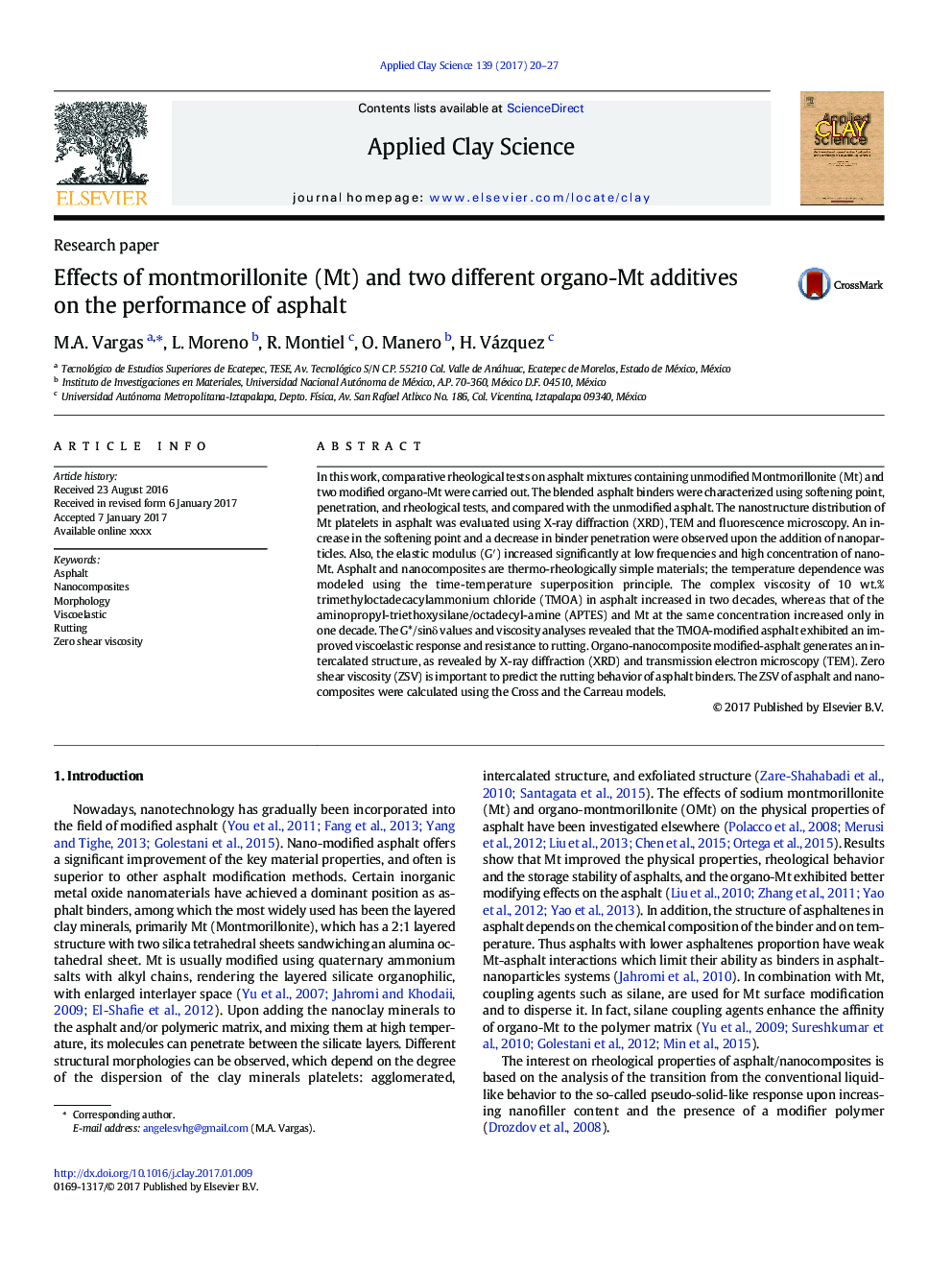| Article ID | Journal | Published Year | Pages | File Type |
|---|---|---|---|---|
| 5468709 | Applied Clay Science | 2017 | 8 Pages |
Abstract
In this work, comparative rheological tests on asphalt mixtures containing unmodified Montmorillonite (Mt) and two modified organo-Mt were carried out. The blended asphalt binders were characterized using softening point, penetration, and rheological tests, and compared with the unmodified asphalt. The nanostructure distribution of Mt platelets in asphalt was evaluated using X-ray diffraction (XRD), TEM and fluorescence microscopy. An increase in the softening point and a decrease in binder penetration were observed upon the addition of nanoparticles. Also, the elastic modulus (Gâ²) increased significantly at low frequencies and high concentration of nano-Mt. Asphalt and nanocomposites are thermo-rheologically simple materials; the temperature dependence was modeled using the time-temperature superposition principle. The complex viscosity of 10 wt.% trimethyloctadecacylammonium chloride (TMOA) in asphalt increased in two decades, whereas that of the aminopropyl-triethoxysilane/octadecyl-amine (APTES) and Mt at the same concentration increased only in one decade. The G*/sinδ values and viscosity analyses revealed that the TMOA-modified asphalt exhibited an improved viscoelastic response and resistance to rutting. Organo-nanocomposite modified-asphalt generates an intercalated structure, as revealed by X-ray diffraction (XRD) and transmission electron microscopy (TEM). Zero shear viscosity (ZSV) is important to predict the rutting behavior of asphalt binders. The ZSV of asphalt and nanocomposites were calculated using the Cross and the Carreau models.
Related Topics
Physical Sciences and Engineering
Earth and Planetary Sciences
Geochemistry and Petrology
Authors
M.A. Vargas, L. Moreno, R. Montiel, O. Manero, H. Vázquez,
